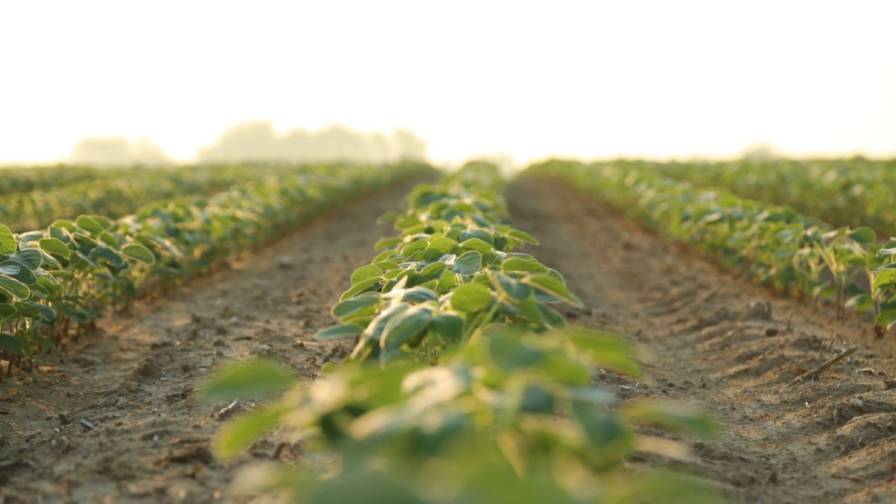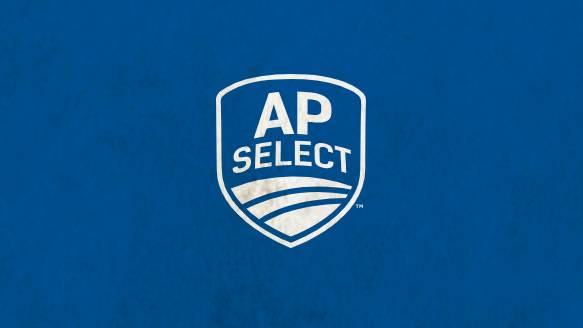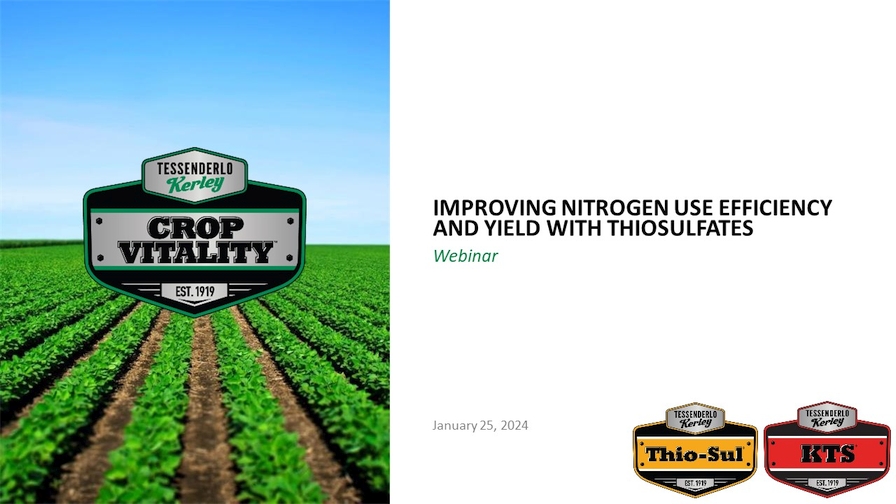Planting the Seed (Treatments) of Success
A mix of new solutions, investments in technology, and growth in markets in the U.S. and around the world have seed treatment providers excited about the future of the crop input segment.
“In 2023 the seed treatment market is expected to have increased from the prior year level, boosted by high crop commodity prices as well as higher planted areas of key crops such as maize in the U.S.,” says Derek Oliphant, Founding Partner, Crop Protection Analyst, AgbioInvestor. “While the seed treatment industry has been well established for a number of decades, the sector has expanded significantly since the introduction of GM seed technologies, boosted by the requirement for growers to protect the relatively high levels of investment made in this technology. As such, growth can be expected to be achieved in the sector through increasing uptake of GM technologies in China.”
Sydney Sebulsky, Marketing Lead for Seed Treatment at BASF, shares that positive sentiment. “If I had to classify seed treatment in 2023 a word I’d use — evolving,” she says. “We really saw an uptake in innovation. This was supported by strong commodity prices. Growers are looking at how they can raise the best crop possible, how can they maximize, yield, and part of that was using seed treatment.”
Sebulsky expects the seed treatment U.S. seed treatment market to grow about 2% next year with 7% to 10% growth outside the country. “We’re in a good spot. For 2024 and expect both the market, and our company to grow.”
One of the companies delivering new offerings is Verdesian.
“As with any other aspect of agriculture, new products tend to get attention,” says Kurt Seevers, Technical Development Manager – Seed Treatments and Inoculants. “This is likely to continue for the foreseeable future as more companies enter the biological and biostimulant categories in particular.”
That’s not to say that the segment hasn’t experienced a few challenges in the last few years.
“Supply chains remain unpredictable following the global pandemic, with inflation and input cost pressure impacting growers’ buying and management decisions,” says Mark Howieson, Global Technical Services Team Leader, Seed Applied Technologies, Corteva Agriscience.
“Seed treatments remain a powerful tool used by farmers to deliver on the promise of their seed investment.” Blake Murnan, Product Development Manager at CHS, a global cooperative, says any unmet expectations the organization expected were counterbalanced by some unexpected wins.
“Planting expectations in 2023 were up for both soybeans and wheat and therefore sales were anticipated to be up as well,” he says. “The fact is that soybean acres fell by 5% impacted opportunity. However, the results showed very good use of seed treatment across our sales geography; it just showed up in different categories compared to initial thoughts.”
The Next Several Years
Verdesian’s Seevers points to several concerns that drove growth and will continue to do so looking to 2024 and beyond.
“The importance of stand establishment continues to be the main driving factor for seed treatment, especially with planting trending earlier than in the past,” he says. “The desire to try new product options is also driving seed treatment. It’s still about getting a stand established, but it’s going beyond just fungicide, insecticide, and other pesticidal products.
“As seed prices continue to increase due to supply issues in some areas because of weather-related reduced production, continued downward trends in seeding rates especially for soybeans, the need to establish as many seeds as possible will continue to drive seed treatment use,” Seevers continues.
As with any successful business it’s not just delivering products — it’s delivering products that growers want.
“Seed treatments have become more complex over time. It is common for seed treatment recipes to include several fungicides, insecticides, nematicides, biologicals, colorants, and polymers,” Corteva’s Howieson says. “Yet growers are asking for more — especially new, underutilized, targeted modes-of-action to address their emerging needs.”
There was a time seed treatment would be one of the first things growers would abandon when they were looking to save a bit of money. That’s no longer the case.
“We believe the seed treatment industry continues to be a critical part of the grower’s ROI,” says Paul Johnson, Seed Treatment Market Manager, Wilbur-Ellis Agribusiness. “Growers continue to increase the size of their operations and plant more efficiently with higher-value seed. Not only does seed treatment help with pests and diseases, but it also assures stand establishment.”
In 2023 CHS’ Murnan pointed to three factors that made this past season a success:
- Strong commodity prices create a desire to maximize yield.
- High input costs create a need to maximize yield and therefore the need to protect that investment going into the ground.
- Strong grower competition to access more acres to grow their business creates the need to maximize yield so dollars per acre can be realized and put to work.
Looking ahead, he points to a few keys that will help the seed market continue its upward trend.
“I see the seed treatment segment continuing to grow,” he says. “Not just on finding more untreated acres but also acres currently using seed treatments and utilizing new and improved products within a seed treatment.”
Trends
Delivering on needs means seed treatment providers must react to the latest pest concerns. In the past few years one pest that’s been on the increase is soybean cyst nematode (SCN), sometimes called the silent yield robber.
“There has been an increasing focus on nematode control in recent years in key markets such as the U.S. and Brazil, and with regulatory concerns over established methods of control such as fumigants, conventional chemical and biological control methods have been well received,” AgbioInvestor’s Oliphant says.
BASF’s Sebulsky says the SCN has been found across millions of acres. “There’s a lot of value in the tools that we can offer to help growers deliver high yielding crops and deal with some of those damaging early season pests and insects,” she says. Other trends focus on accommodating the ever-growing need for more sustainable solutions. Verdesian, for example, has seen an increase in interest for biological and biostimulant seed treatment.
“One other category is also gaining momentum — seed treatment micronutrients,” Seevers says. “Even small amounts of these nutrients applied to the seed can have a terrific impact on stand establishment and early season growth.”
Growers have been the beneficiaries of numerous innovations.
“There has been a big uplift in value-added seed treatments over the past several years,” Wilbur-Ellis’ Johnson says. “We’ve seen several new biological, nutritional, and bacteria-type seed treatment products come to market. Some have proven valuable, and some have not.”
Challenges & Opportunities
Seed treatments are not one size fits all. With variable weather conditions, different soils, and the many varied factors that growers must deal with, what works in one part of the country might not be as effective elsewhere. That’s where the retailer can help.
One of the challenges for seed treatment is the limited amount of space on a seed. And that’s not going to change. That doesn’t mean seed treatment providers aren’t exploring new ways to deliver treatments.
“There’s innovation coming, and there is a lot of great stuff that you can put on your seed,” Sebulsky says. “BASF is working on formulations, higher concentration formulations. Can we deliver active ingredients at a lower use rate, so that you do have more space to add things on seed.”
The growth of biological treatments offers additional opportunities … and additional challenges.
“The compatibility between biologicals and the other seed treatment products will be an emerging concern for companies in the seed treatment market,” Verdesian’s Seevers says. “Let’s not forget that compatibility between different biologicals should be a concern as well. There can be competition between biologicals for resources that the plant provides. This competition could result in reduced efficacy of one or more biologicals applied to the same seed, or even as in-furrow treatments.”
In general, though, these tools will benefit both growers and providers.
“Opportunities exist with biologicals and biostimulants,” Seevers says. “Continued excitement for a number of reasons, even outside of agriculture, will provide some of the largest opportunities. Seed treatments that provide a biofertilizer effect are among the products generating the most interest. Nitrogen fixation for non-legume crops is a hot topic and increasing availability of other nutrients such as phosphorous continues to be popular as well.”
Corteva’s Howieson also sees a bright future for the segment.
“We expect the seed treatment market will continue to grow and continued innovations in seed treatment technologies will further drive adoption,” he says.
It all boils down to giving growers products that will ultimately deliver profit on the promise. “In the near future, the market is expected to benefit from a strong increase in the use of biological pesticides alongside chemical actives, as well as active ingredients for control of nematodes, with both of these increasing from a relatively low base,” AgbioInvestor’s Oliphant says. “Furthermore, technification is expected to benefit growth as developing markets increasingly utilize seed treatments on new acres and trade up to more advanced technologies with multiple active ingredients in order to drive yields and quality.”






